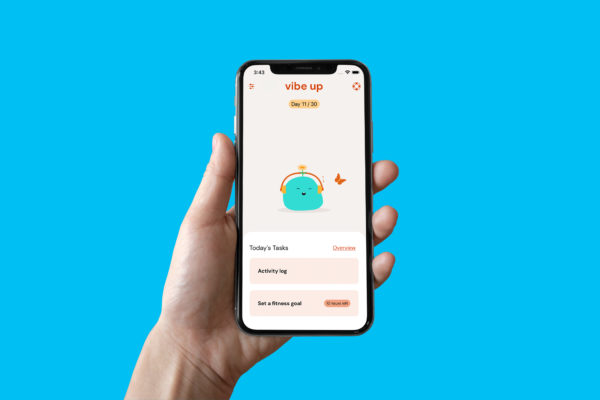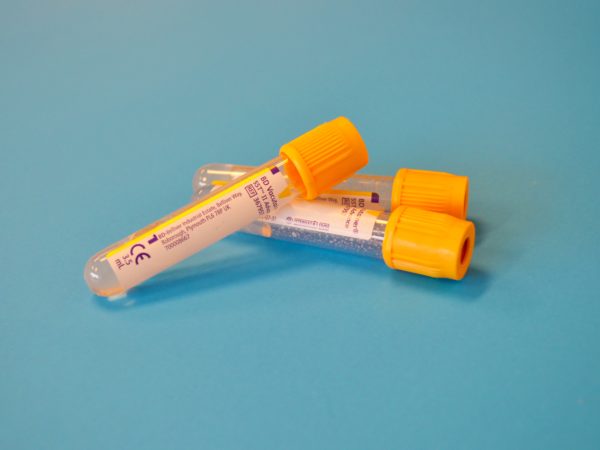Associate Professor Peter Enticott will drive a major study on children’s brain development.
On board the “Mind Explorer #2” van, a team of Deakin University researchers from the Centre for Social and Early Emotional Development (SEED) plan “to boldly go where no van has gone before”. They will embark on a four-year, ARC Future Fellowship project, and gather neuroscience research data from primary schools across Victoria.
“This project aims to understand how the human brain develops social and emotional understanding. The brain has remarkable abilities for understanding our social environment, such as inferring other people’s thoughts and feelings. We will use neuroscience techniques to investigate: how brain networks combine to produce social understanding; how this changes throughout child development; and how it relates to complex social behaviours,” said lead researcher, Associate Professor Peter Enticott.
The team of researchers will visit primary schools equipped with an electroencephalogram (EEG), to gather data on the biology of healthy social brains – the neurological network that allows us to mirror, understand, and experience emotions such as empathy.
“The mobile approach with the Mind Explorer #2 van allows us to work with a large sample in the community, rather than requiring participants to attend a laboratory setting, which can be less convenient and more intimidating,” said Associate Professor Enticott.
Approximately 160 children, accompanied by a parent, will take part in the project. The parents will answer a series of questions about how their child interacts with others and behaves.
The children, aged four to twelve, will watch a video of facial expressions, while their eye tracking responses are recorded. Their brain activity will also be monitored by the EEG – a painless process. Flat metal disks, attached to the scalp via a soft cap, will track the electrical impulse of brain cells. These patterns will show which areas of the brain react to emotional stimuli, such as a smiling, sad, or angry face, for instance. The students will also press a button to label the emotion they recognise.
[testimonial_text]By assessing children at different age groups, from kinder to the end of primary school, we can gather information on how the social brain develops.[/testimonial_text]
[testimonial_picture name=”Associate Professor Peter Enticott” details=”Project Lead”]
 [/testimonial_picture]
[/testimonial_picture]“It’s an important time, when kids gather independence, and enter situations where they form new peer relationships and need to navigate more complex social environments, with less parental supervision.”
Associate Professor Enticott said the hypothesis is that the typical social brain will display stronger neural connections with age.
“We hope to find out how these areas of the brain develop, and how they communicate with one another. It’s not just a series of different regions; they are interconnected. That normative developmental data can help us identify how a typical social brain should work and develop,” he said.
“The research findings could be used to develop educational programs that enhance empathy and co-operation, strengthen family relationships, promote social inclusion and reduce maladaptive behaviours. It could also guide intervention in brain disorders that affect social understanding.”
Associate Professor Enticott is Discipline Leader in Cognitive Neuroscience and Director of the Cognitive Neuroscience Unit in the School of Psychology. In 2013 he received a Young Scientists’ Award from the World Federation of Societies of Biological Psychiatry.
The Mind Explorer research sets the scene for introducing neuroscience into broader, longitudinal research of social and emotional development. Findings will link in with large longitudinal cohort studies being undertaken within SEED, such as the Australian Temperament Project (ATP), which is providing rich information, spanning over 30 years, on participants and their offspring.
While the current research project is not longitudinal, it will add to the neuroscience understanding of social and emotional development, and provide comparison data for other research. The testing measures will also be applied to ATP participants in the later phase of the project.
“We hope to move toward an ability to predict social communication, so we can measure a child at four years, or even younger, and have a reliable prediction of how they will function, get along with other kids and manage their emotions as they develop into adolescence,” said Associate Professor Enticott.
“Neuroscience-based assessments of the social capacity of young children could help us to recognise children who may be at risk of emotional or behavioural problems, figuring out what age to intervene and what type of treatment will work best for positive outcomes. Research could provide information about the best educational types of intervention to help people learn to regulate their own emotions, develop language skills and utilise brain function to full capacity. This could help to develop more rounded, mindful and empathic people.”
- Learn more about the Mind Explorer #2 van in this short video.
This story was published by Deakin Research on 3 April 2017.



